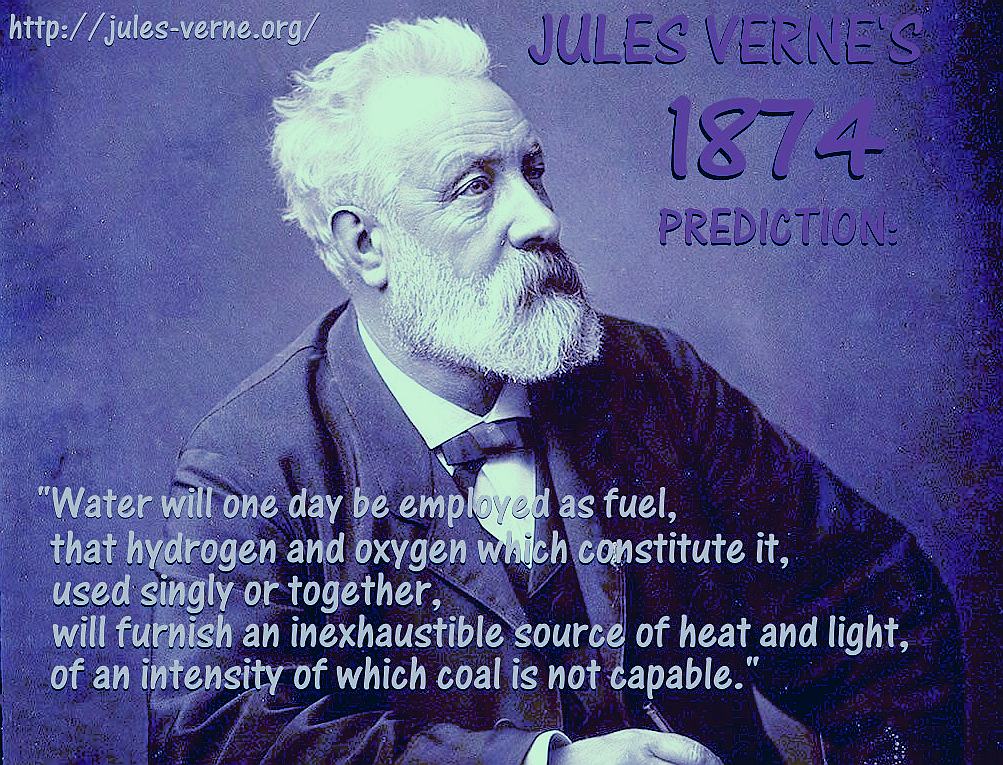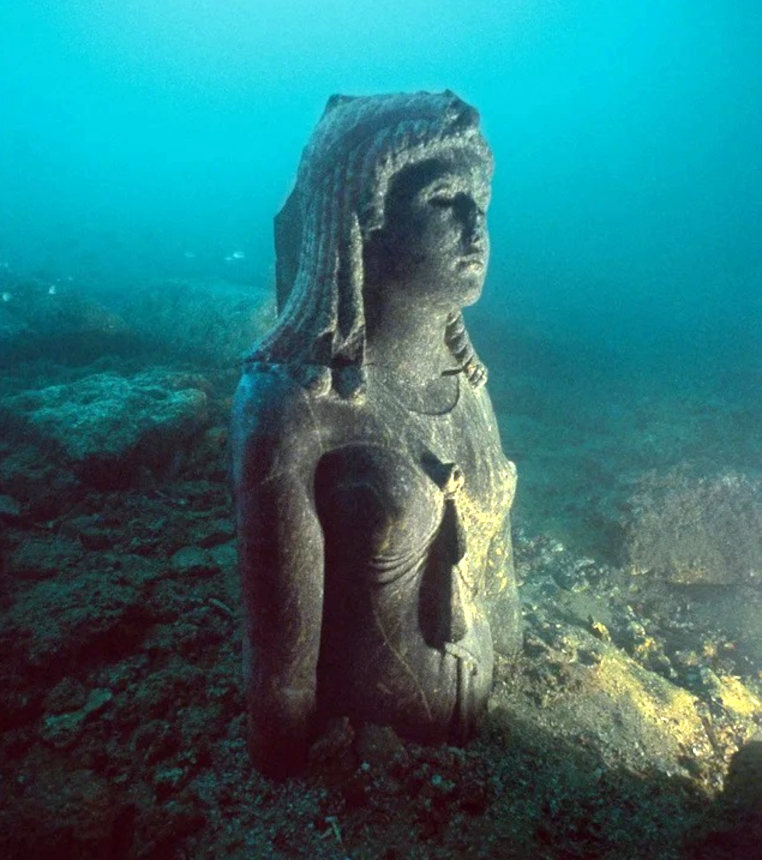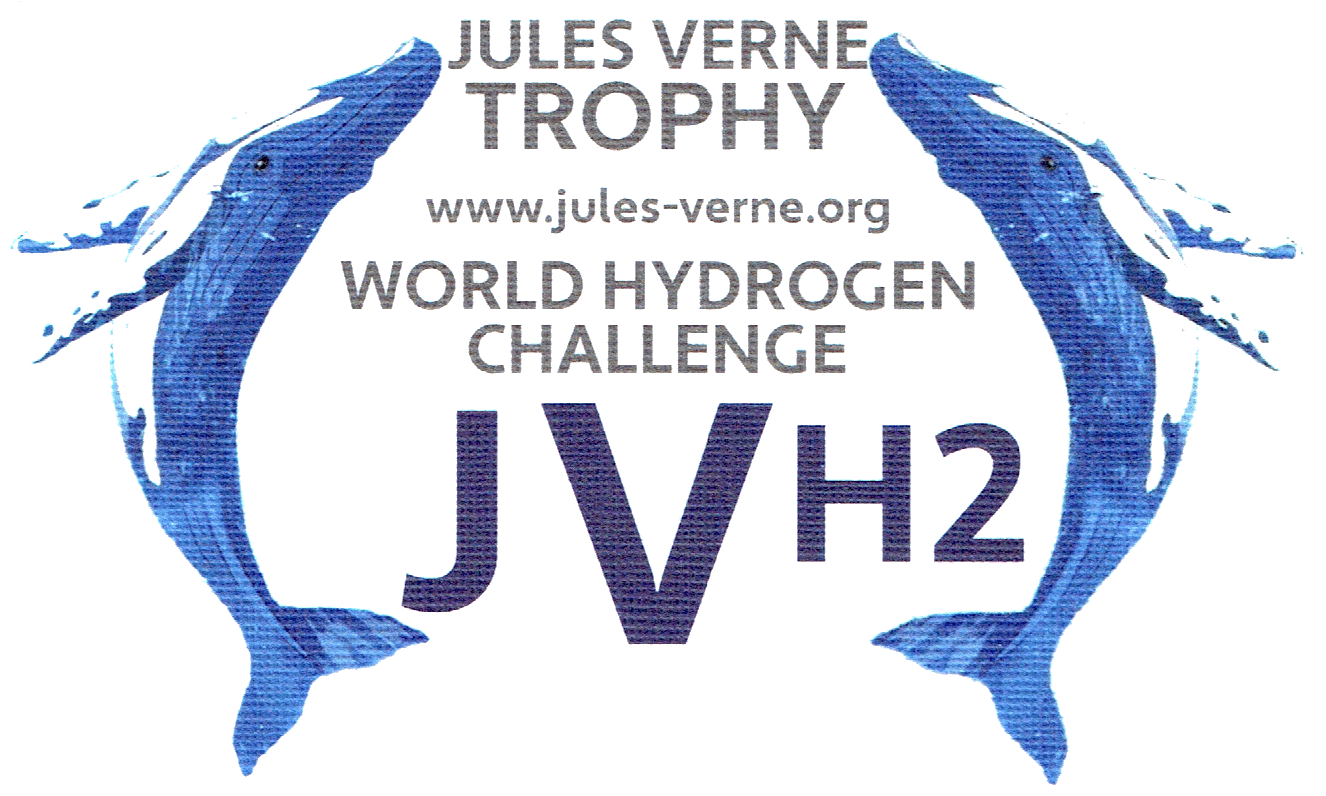|

It
was Jules
Verne, who in 1874, first proposed water as an energy source, in The
Mysterious Island. If we move quickly enough, we could mount a World
Hydrogen Challenge on the 150th anniversary of his prediction, in
2024 - with the world's
fastest & largest hydrogen ship.
OUTER
SPACE - Is commonly shortened to 'space,' is the expanse that exists beyond Earth and its atmosphere and between celestial bodies. Outer space is not completely empty—it is a hard vacuum containing a low density of particles, predominantly a plasma of hydrogen and helium, as well as electromagnetic radiation, magnetic fields, neutrinos, dust, and cosmic rays.
Outer space does not begin at a definite altitude above the Earth's surface. The Kármán line, an altitude of 100 km (62 mi) above sea level, is conventionally used as the start of outer space in space treaties and for aerospace records keeping. The framework for international space law was established by the Outer Space Treaty, which entered into force on 10 October 1967. This treaty precludes any claims of national sovereignty and permits all states to freely explore outer space.
Humans began the physical exploration of space during the 20th century with the advent of high-altitude balloon flights. This was followed by crewed rocket flights and, then, crewed Earth orbit, first achieved by Yuri Gagarin of the Soviet Union in 1961. Due to the high cost of getting into space, human spaceflight has been limited to low Earth orbit and the Moon. On the other hand, uncrewed spacecraft have reached all of the known planets in the Solar System.
Outer space represents a challenging environment for human exploration because of the hazards of vacuum and radiation. Microgravity also has a negative effect on human physiology that causes both muscle atrophy and bone loss. In addition to these health and environmental issues, the economic cost of putting objects, including humans, into space is very high.
WHERE IS THE BOUNDARY?
There is no clear boundary between Earth's atmosphere and space, as the density of the atmosphere gradually decreases as the altitude increases. There are several standard boundary designations, namely:
- The Fédération Aéronautique Internationale has established the Kármán line at an altitude of 100 km (62 mi) as a working definition for the boundary between aeronautics and astronautics. This is used because at an altitude of about 100 km (62 mi), as Theodore von Kármán calculated, a vehicle would have to travel faster than orbital velocity to derive sufficient aerodynamic lift from the atmosphere to support itself.
- The United States designates people who travel above an altitude of 50 mi (80 km) as astronauts.
- NASA's Space Shuttle used 400,000 feet (122 km, 76 mi) as its re-entry altitude (termed the Entry Interface), which roughly marks the boundary where atmospheric drag becomes noticeable, thus beginning the process of switching from steering with thrusters to maneuvering with aerodynamic control surfaces.
In 2009, scientists reported detailed measurements with a Supra-Thermal Ion Imager (an instrument that measures the direction and speed of ions), which allowed them to establish a boundary at 118 km (73.3 mi) above Earth. The boundary represents the midpoint of a gradual transition over tens of kilometers from the relatively gentle winds of the Earth's atmosphere to the more violent flows of charged particles in space, which can reach speeds well over 268 m/s (600 mph).
LEGAL - SPACE LAW
Space law also encompasses national laws, and many countries have passed national space legislation in recent years. The Outer Space Treaty gives responsibility for regulating space activities, including both government and private sector, to the individual countries where the activity is taking place. If a national of, or an organization incorporated in one country launches a spacecraft in a different country, interpretations differ as to whether the home country or the launching country has jurisdiction.
The Outer Space Treaty also incorporates the UN Charter by reference, and requires parties to ensure that activities are conducted in accordance with other forms of international law such as customary international law (the custom and practice of states).
The advent of commercial activities like space mining, space tourism, private exploration, and the development of many commercial spaceports, is leading many countries to consider how to regulate private space activities. The challenge is to regulate these activities in a manner that does not hinder or preclude investment, while still ensuring that commercial activities comply with international law. The developing nations are concerned that the spacefaring nations will monopolize space resources. Royalties paid to developing countries is one reason the United States has not ratified the
United Nations Convention on the Law of the
Sea (UNCLOS), and why some oppose applying the same principles to outer space.
|
|
As
a JVH2 competitor, the Elizabeth Swann will provide live feeds to the
media and public, and data
sharing of the attempt to circle the globe in under 80 days,
competing for a Trophy
and the title, alongside a genuinely scientific expedition.
You
will be able to see the weather (wind and sea state) and the wild life in the oceans ahead of
the Formula Hydrogen powered trimaran, streamed live, as part of
a scientific and educational tour of the world, in true Phileas
Fogg fashion.
LOST
CIVILIZATIONS - AS A TASTER
The legend of
Atlantis was created by Plato some 2,300 years ago.
Plato claimed that this utopian civilization, that allegedly existed 9,000 years before even his time, was punished by the gods for becoming selfish, greedy, and amoral and thus sunk into the seas. Which
sea or ocean, is not
known, but it most likely be near the gates between the Atlantic
Ocean and Mediterranean
Sea.
Great fiction, you may care to agree, but there are real life sunken
cities:
YONAGUNI
JIMA - JAPAN
The Yonaguni Monument is Japan’s Atlantis. Steeped in mystery and controversy, off the coast of the Ryukyu Islands there lie strangely even shapes which some scientists believe can only be manmade and point to an ancient civilization submerged some 10,000 years ago. A pyramid-shaped structure, an arch, staircases, and other shapes complete with markings that could be ancient script, have reportedly been identified, all hinting to a lost civilization. Others say that the structures are purely naturally-occurring, not unlike the symmetrical basalt columns found in Iceland or on the Giant’s Causeway in Northern Ireland.
DWARKA
- INDIA
The city of Dwarka, or “Gateway to Heaven,” was discovered submerged some 100-feet below the Gulf of Cambay in 1988. Ancient structures, pillars, grids of a city, and ancient artifacts were found. Steeped in mystery, some believe them to be at least 10,000 years old, others say they could be 5,000 years of age, yet others are sure that they date from the Middle Ages. Yet, others claim that in 1473 the Gujarat Sultan Mahmud Begada attacked the city and destroyed the temple of Dwarka. Either way, this is a true underwater city, long lost, full of mystery and legend, and magnificent.
ATLIT-YAM
- ISRAEL
So many underwater complexes allege to be the oldest, but this one seems to have a definite claim to the title. Off the coast of Israel in the
Mediterranean
Sea, lies the Neolithic settlement of Atlit-Yam, thought to be around 8,000 years old. Discovered in 1984, in 30-feet deep water, there are buildings, graves, even the odd skeleton. But the most amazing find must be the seven megaliths arranged in a circle, like an underwater Stonehenge. It is believed that an earthquake and subsequent tsunami resulted in the settlement becoming submerged.

THONIS-HERACLEION
AND ALEXANDRIA - EGYPT
Long lost Alexandria has just as many legends and mysteries spun around it as Atlantis, but this one is real. And it has been found. And there are two sunken cities for the price of one. Alexandria’s remains lie literally a few feet off the coast, while
Thonis-Heracleion rests a little farther off the coast of today’s Alexandria. Both spectacularly well-preserved, considering the ruins are more than 2,000 years old and littered with various shipwrecks, dropped anchors, even lost-and-found
gold treasures. Temples and buildings of Thonis-Heracleion were once separated by canals, not unlike Venice, but how and why exactly the city became submerged is still a mystery.
While Thonis-Heracleion is still only accessible for scuba divers, Alexandria’s ruins will hopefully soon be on view via the proposed Underwater Archeological Museum of Alexandria.
BAIA
- ITALY
Another once wicked city submerged underwater. This time it was not pirates that were wicked, but hedonistic Romans that flocked to
Baia, dubbed the Las Vegas of ancient Rome, some 18 miles outside of Naples on the Mediterranean coast. Alas, as seems to happen with wicked cities, it sank. Most likely due to the region’s rather active volcanic activities. The 2,000-year-old remains are in superb condition with many intact statues found, together with houses and temples. Most of the city lies at a depth of fewer than 20 feet, and some of it even visible above water. The archaeological park can be explored by donning a snorkel.
PHANAGORIA
- RUSSIA
Once reportedly the largest city of ancient Greece and the capital of the Bosphoran Kingdom,
Phanagoria was founded around 540 B.C. and stretched across the Taman Peninsula in the
Black
Sea, now part of Russia. A third of the old city is submerged in the waters of the Black Sea, but two-thirds are on land, making for an enormous archaeological site, dry and wet, with new discoveries still being made.
PAVLOPETRI
- GREECE
In 1967 an oceanographer discovered what looked like ancient ruins and a year later a survey produced a plan of a prehistoric town thought to be Mycenaean, lying in three to 12 feet of water in the Peloponnese, in south-western Greece.
Pavlopetri, named after a nearby settlement, has since been touted as the oldest underwater city, dating to the Bronze Age, and occupied from the third millennium until 1100 B.C. Located steps away from a sandy beach, it is a miracle that it is the good condition it is.
PORT
ROYAL - JAMAICA
On June 7, 1692, a massive earthquake followed by a tsunami killed 2,000 people and submerged the city of Port Royal in Jamaica. Once called the “wickedest city on earth,”
Port Royal was home to real-life pirates of the Caribbean, and the city’s sinking was deemed an act of God. But that did not stop the pirates, who just moved farther up the coast. Today it is deemed to be one of the best-preserved underwater cites in the world, with only a few items having been removed and placed into various museums across Jamaica. You can scuba dive to the sunken city but need special permission from the authorities.
Then
there are flooded towns, and shipwrecks - the mystery continues.
See
more on the official Jules Verne
website.
|


